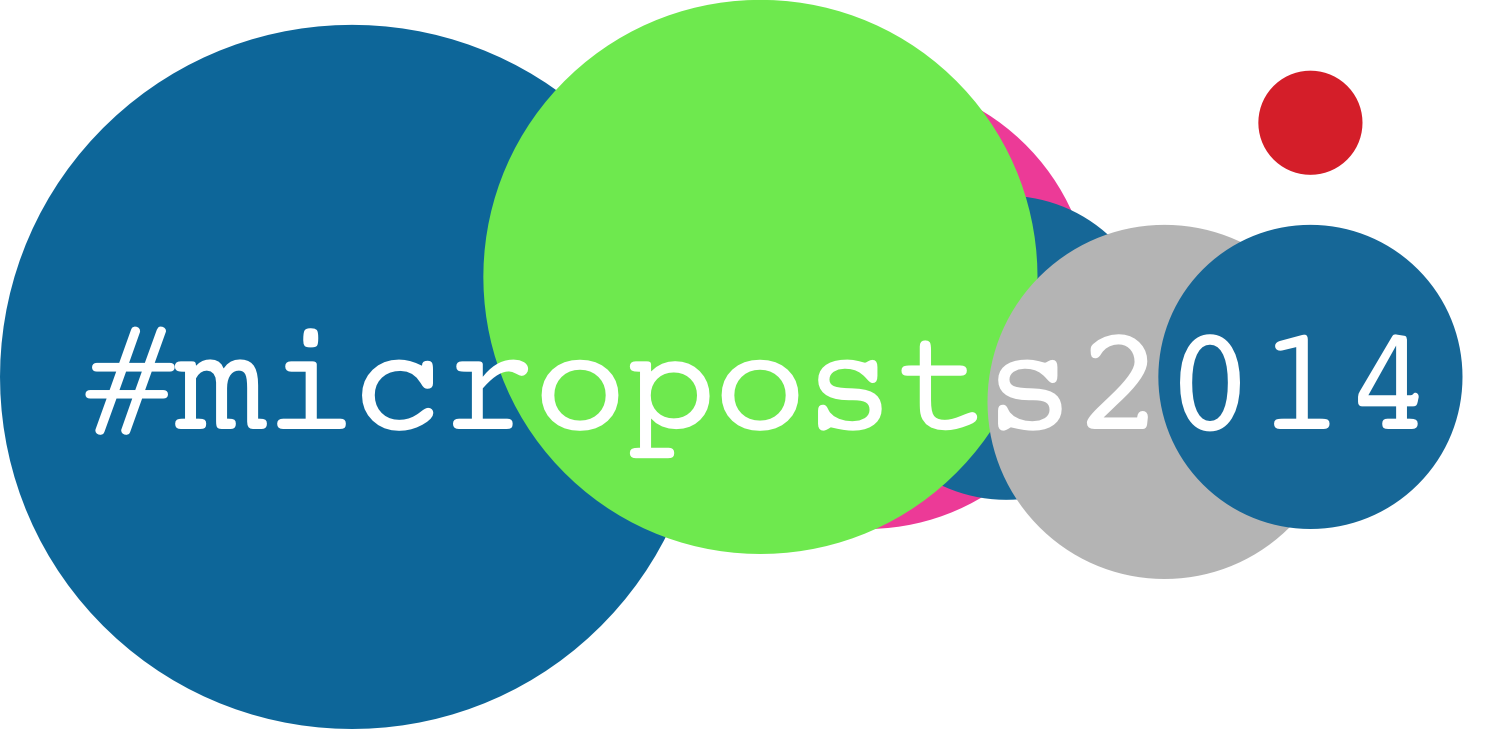Motivation and Topics
Theme: Making Sense of Microposts: Big things come in small packages
Microposts, such as Twitter status updates, Instagram likes and photos and Foursquare checkins, form a notable part of published web content. Smart phones, after overtaking sales of personal computers in 2012, now play a significant role in enabling ubiquitous communication, and have contributed to the steep increase in publication of Microposts, via native mobile apps and mobile-specific web sites. The increase in Micropost publication is evident across Twitter, where 500 million posts are now published every day, up from 175 million in 2012. Facebook sees 30 billion pieces of content shared on it every month. Such statistics reflect the growing production and consumption of data by users and the widespread sharing of information through social networks. The utility of Microposts is such that we are now providing up-to-date information about a range of topics formed in disparate contexts, providing information about emerging events, online presence, emergency response and crowd movement. Being able to make sense of Microposts therefore impacts on the ability to act upon information quickly and effectively, and aids the understanding of evolving user behaviour, events and public perception and opinion about their worlds.
The central objective of the #Microposts workshop is to bring together researchers from multiple disciplines to discuss and debate current efforts toward analysing and understanding Microposts. We define a Micropost as information published on the Web that is small in size (e.g. a Tweet, Facebook share, Instagram like) and that requires minimal effort to publish. Although individual Microposts are small, collectively they provide a rich source of current information about a range of topics across all walks of life. Gleaning information from such content effectively requires a degree of understanding of what is being discussed and, with very large amounts, semi- to fully automated analytical and extraction approaches. The workshop aims to provide a forum to enable discussion and hence, improve understanding of social and cultural phenomena that influence the publication and reuse of Microposts; and to discuss applications of Micropost data in a variety of contexts, including emergency response, crowd and event tracking, public opinion and sentiment analysis. Enabling the understanding and application of Micropost content requires analytical techniques and tools that function at scale and that can handle the high rate at which Microposts are published. The workshop invites submissions that deal with publication rate and scale, and approaches that facilitate understanding of Microposts through their semantics and where available, contextual information.
Microposts are both a technical and a social phenomenon, and the nature of the challenge related to their treatment is therefore multi-disciplinary. We continue to promote a multidisciplinary workshop, as achieved in the past three in the series, by also encouraging social scientists and other non-Computer Science researchers to submit work that looks at the theories behind Micropost usage and communication through this medium. The workshop also encourages demonstration of practical application of the results of analysis of Micropost data, both within the research community and in everyday, real-world scenarios. We encourage submissions using this and last year's challenge data for contributions to the main track.
Topics
The workshop will focus on topics including, but not exclusive to, the three main areas below. The first concerns mining knowledge and information from microposts in different contexts and targeting different challenges related to the specific nature of microposts, the second targets research on Microposts outwith a pure Computer Science perspective, and the last addresses the application of research on Micropost data.
- Data mining from Microposts
- Emergent semantics
- Opinion mining, sentiment and sentic analysis
- Network analysis and community detection
- Influence detection and social contagion modeling
- Prediction approaches
- Linking Microposts into the Web of Data
- Semantic entity disambiguation
- Social & Web Science Studies
- Collective awareness
- Education & citizen empowerment, data journalism
- Civil action, media & politics
- Political and polemical aspects of Microposts
- Ethics, legal and privacy issues
- Psychological profiles and psychological aspects of Micropost-based interactions
- Cultural and regional differences in access and use
- Applications
- Collective intelligence, including user profiling, personalisation & recommendation
- Business analytics & market intelligence
- Event & topic detection and tendency tracking
- Microposts as second screen to TV
- Geo-localized, Micropost-based services
- Public consensus & citizen participation
- Security, emergency response & health
- Linking social and physical signals, in, e.g., crowd tracking
